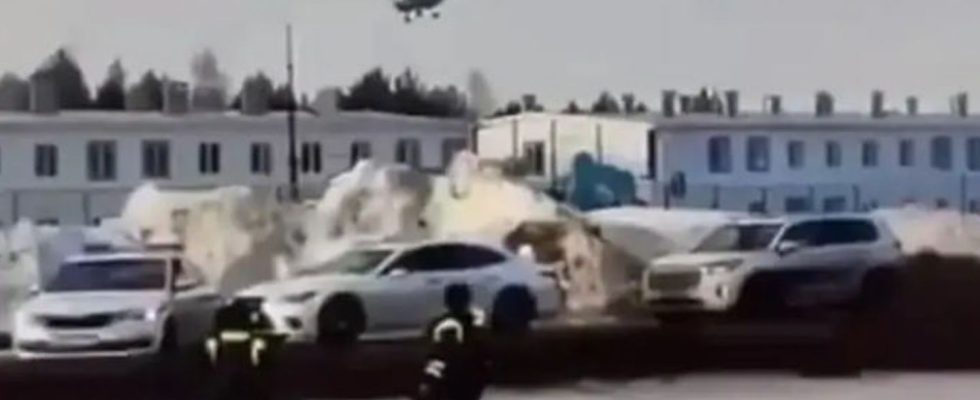War in Ukraine
3,000 kilometer range – Kiev’s new long-range drone can attack almost anywhere in Russia
Deer screenshot shows the drone shortly before impact.
Kiev attacks a drone factory deep in Russia with a converted small aircraft. Great Russia no longer offers enough space to hide worthwhile targets from the Ukrainians.
Bad surprise for Vladimir Putin: A Ukrainian combat drone crashed into the heart of a Russian drone factory. The facility is located 1,300 kilometers behind the front in Yelabuga, Tatarstan. According to Ukrainian information, these drones should even be able to cover distances of up to 3,000 kilometers – so they can target targets all over the world Russia, with the exception of the Far East, will be attacked.
This means that the war has reached the heart of Russia – the range of the drone is far greater than that of the Taurus cruise missile. It’s exciting to see how Kiev achieved this feat. A small aircraft that had been converted to drone operation was used for the operation. The basis is an Aeroprakt A-22 Foxbat light aircraft. Foxbat – a species of bat – was also the NATO name for the MIG 25. However, the mini plane has little in common with the fighter jet: the A-22 looks like a Cessna that is too small.
Small aircraft from Ukraine
The A-22 is powered by a propeller. The shoulder-winged wing is less than seven meters long and only requires a very short runway. The maximum speed is 170 kilometers per hour. What is remarkable is the low minimum speed of just 55 km/h. The A22 was designed and is being built in Ukraine. Models that were developed as drones from the outset will probably be built based on the A22. However, the use can also be a subsequent conversion.
In any case, the A-22 was modified for drone control. If ranges of 2,000 to 3,000 kilometers are actually to be achieved while transporting a warhead weighing 300 kilograms, major changes would have to be made to the small aircraft. This is probably not necessary for the distance of 1,300 kilometers. Although the machine has to accommodate the drone controls and the bomb, all components that are necessary for the crew and safety can be removed. In addition, the weight of the occupants is missing. And finally, the Foxbat can be flown significantly overloaded if civil safety standards are ignored and stressful maneuvers are avoided.
Hard to discover
Small aircraft that move at low altitudes are difficult to detect by air defenses. The German Matthias Rust was able to land on Red Square in 1987 with his Cessna 172 P. Such small aircraft are always in the airspace and camouflage enemy drones. It is difficult to judge how successful the operation was. The wreckage was recovered. Apparently the cabin was destroyed in the explosion, but the entire lower part of the A-22 remained intact. This may indicate that the explosion was not as powerful as hoped. However, it is also possible that the small aircraft disintegrated when it hit the roof of the hall, i.e. before the explosion.
War is coming to Russia
This development cannot come as a surprise. Other slow-flying, propeller-driven drones can also achieve enormous ranges. But the attack on the plant and other locations probably caught the Russians off guard. The warhead’s destructive effect is limited, but these attacks make it difficult for the Russians to work as undisturbed as if there were peace. And they show that Ukraine can strike almost anywhere in Russia. Detecting the target, determining the path, steering and the exact final approach are only possible with the help of the allies. Kiev’s allies are showing Vladimir Putin how far they are willing to go.



